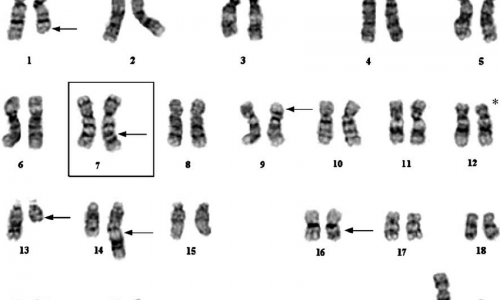https://www.sh-eahp.org/images/Arber_EAHP2016.pdf
| AML Category | Subcategories |
| AML with recurrent genetic abnormalities | AML with t(8;21)(q22;q22.1);RUNX1-RUNX1T1AML with inv(16)(p13.1q22) or t(16;16)(p13.1;q22);CBFβ- MYH11APL with PML-RARAAML with t(9;11)(p21.3;q23.3);MLLT3-KMT2AAML with t(6;9)(p23;q34.1);DEK-NUP214AML with inv(3)(q21.3q26.2) or t(3;3)(q21.3;q26.2); GATA2, MECOMAML (megakaryoblastic) with t(1;22)(p13.3;q13.3);RBM15-MKL1Provisional entity: AML with BCR-ABL1AML with mutated NPM1AML with biallelic mutations of CEBPAProvisional entity: AML with mutated RUNX1 |
| AML with myelodysplasia-related changes | |
| Therapy-related myeloid neoplasms | |
| AML NOS (not otherwise specified) | AML with minimal differentiationAML without maturationAML with maturationAcute myelomonocytic leukemiaAcute monoblastic/monocytic leukemiaPure erythroid leukemiaAcute megakaryoblastic leukemiaAcute basophilic leukemiaAcute panmyelosis with myelofibrosis |
| Myeloid sarcoma | |
| Myeloid proliferations related to Down Syndrome | Transient abnormal myelopoiesis (TAM)Myeloid leukemia associated with Down syndrome |
- AML with APL-RARA (t15;17)(q24.1) 13% of all AML is this subtype.
- AML with inv(16)(p13.1;q22) or t(16;16)/CBFB-MY11 5% of all AML is this subtype.
- AML with t(8;21)/(q22;q22)/RUNX1-RUNX1T1 7% of all AML cases.
AML Treatment
| Group of Drugs | Mechanism of Action | Example |
| Alkylating Agents | Adding alkyl groups to cause breakage of DNA stands | Busulfan |
| Antimetabolites | Prevents DNA replication | Methotrexate |
| Mitotic Inhibitors | Plant alkaloids that damage cells and prevent replications | Vinsristine |
| Corticosteroids | Induce apoptosis in leukemic cellsCan also induce differentiation | Dexamethasone |
| Category | Subcategory |
| B-cell lymphoblastic leukemia/lymphoma, not otherwise specified | |
| B-cell lymphoblastic leukemia/lymphoma with recurrent genetic abnormalities | B-cell lymphoblastic leukemia/lymphoma with hypodiploidy |
| B-cell lymphoblastic leukemia/lymphoma with hyperdiploidy | |
| B-cell lymphoblastic leukemia/lymphoma with t(9;22)(q34;q11.2)[BCR-ABL-1] | |
| B-cell lymphoblastic leukemia/lymphoma with t(v;11q23)[MLL rearranged] | |
| B-cell lymphoblastic leukemia/lymphoma with t(12;21)(p13;q22)[ETV6-RUNX-1] | |
| B-cell lymphoblastic leukemia/lymphoma with t(1;19)(q23;p13.3)[ZTCZX3-PBX1] | |
| B-cell lymphoblastic leukemia/lymphoma with t(5;14)(q31;q32)[IL-3IGH] | |
| B-cell lymphoblastic leukemia/lymphoma with intrachromosomal amplification of chromosome 21 (iAMP21) | |
| B-cell lymphoblastic leukemia/lymphoma with translocations involving tyriosine kinases or cytokine receptors (BCR-ABL1-like ALL) | |
| T-cell lymphoblastic leukemias/lymphomas | Early T-cell precursor lymphoblastic leukemia |
ALL genetic abnormalities….
- ETV6-RUNX1 (caused by a translocation of 12;21)
- IKZF1 (involves a deletion of a key transcription factor important in B cell development)
- BCR/ABL1 (involves a kinase activating factor) (also with CML)
ALL treatment
vincristine, corticosteroids, an anthracycline, chemotherapy, allographic bone marrow transplants.
Acute leukemia of ambiguous lineage (ALAL) was a subtype established in the 2016 WHO classification revision. It is a very rare leukemia, that is further subdivided into five possible subgroups, partially based on chromosomal analysis.ALAL patients present with an acute leukemia, but a specific lineage can not be assigned.Some types of ALAL are immature hematopoietic neoplasms that show no differentiation into lymphoid or myeloid lines (AUL), whereas other types exhibit markers of both AML and ALL. The latter are referred to as mixed phenotype acute leukemia (MPAL).

